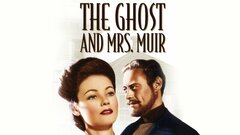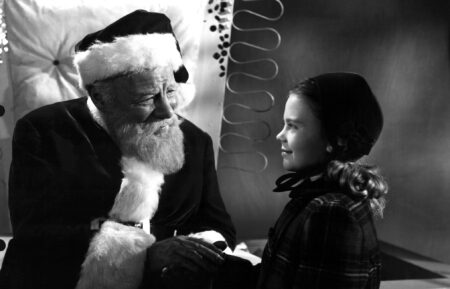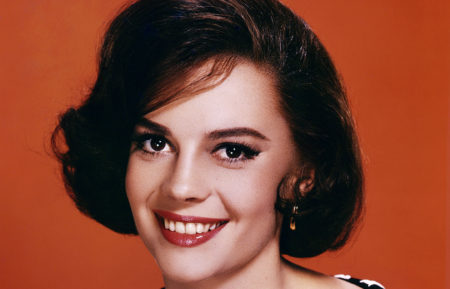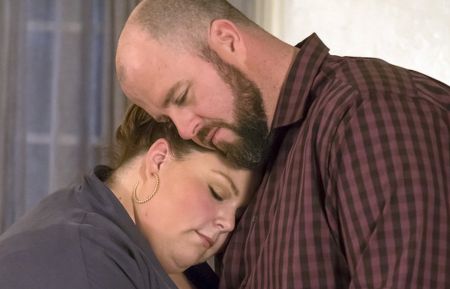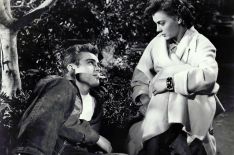A doe-eyed, brunette beauty, Natalie Wood was one of Hollywood's brightest stars and a legend both on and off the silver screen. Born to Russian immigrants, Wood found herself in the spotlight as a child, capturing audience's hearts in the holiday classic, "Miracle on 34th Street" (1947).
Maintaining a successful career as an adult, she went on to turn in Oscar-nominated performances in the films "Rebel Without a Cause" (1955) and "Splendor in the Grass" (1961), as well as charming audiences as Maria in the hit musical "West Side Story" (1961). Wood's storybook marriage to fellow actor Robert Wagner delighted movie fans - first, in the late 1950s, and later, following their divorce, when the couple reunited for a second go at marriage in the early 1970s.
With a personal life rivaling the plot of any Hollywood movie, Wood was one of the most beloved actresses of her time, even long after her mysterious drowning death in 1981, which left behind more questions than answers. Although investigations into Wood's mysterious death seemed to be re-opened every few years, with Wagner being named a "person of interest" in early 2018, it remained officially unsolved.
Born Natalia Nikolaevna Zakharenko on July 20, 1938 in San Francisco, CA to her Russian parents, father Nikolai Gurdin, an architect and set designer, and mother, ballet dancer Maria Gurdin. Wood's parents later changed their surname to Gurdin while Wood was still a baby.
Spending the early part of her childhood in Santa Rosa, CA, Wood was introduced to film at the age of four when her mother took her to a film audition to work as an extra. She landed a bit part as a little girl who drops her ice cream in the film "Happy Land" (1943), which was shooting locally. Convinced that her daughter was meant for stardom, Wood's mother pushed for the family to move to Hollywood so Wood could pursue acting.
Landing her first credited role in 1946, Wood appeared alongside Orson Welles and Claudette Colbert in "Tomorrow is Forever." As was the norm back then, the studio gave her a new name: Natalie Wood. Hailed as Hollywood's newest child star before the film's release, Wood's career took off very quickly. The following year, she gave touching performances in Joseph L. Mankiewicz's "The Ghost and Mrs. Muir" (1947) and the holiday classic "Miracle on 34th Street" (1947) - the latter being her most famous film as a child actress.
Having filmed 20 movies by the age of 16, Wood spent most of her adolescence on a movie set, being tutored in between takes. Hoping to break away from her child star image, Wood accepted the role of rebellious teenager Judy in "Rebel Without a Cause" (1955).
Cast opposite young heartthrob James Dean, the film proved to be a turning point for Wood; the role earned her an Academy Award nomination for Best Supporting Actress, a first for the young star. It also gave audiences a chance to see her in a new adult light. Staging her own rebellion while filming "Rebel," Wood began to date the film's director, the notorious Nicholas Ray, who was more than 25 years her senior.
Ray was only the first in a string of affairs Wood had with older men; she was soon linked to actor Scott Marlowe and The King himself, Elvis Presley. Set up with handsome actor Robert Wagner on a studio-arranged date for her 18th birthday, Wood quickly fell head over heels in love. After a year-long relationship, the pair wed on Dec. 28, 1957 when Wood was only 19 years old.
Making a successful transition into more adult roles, Wood starred as a Hollywood actress in "Marjorie Morningstar" (1958) opposite Gene Kelly and as a sexually awakening and mentally disturbed teen in Elia Kazan's racy "Splendor in the Grass" (1961) opposite Warren Beatty.
Earning her second Academy Award nomination for "Splendor," the film proved to be one of Wood's most popular pictures. Further cementing her reputation as not only a true beauty, but a true talent as well, Wood went on to star as Maria in the Leonard Bernstein musical "West Side Story" (1961) and as burlesque dancer Gypsy Rose Lee in "Gypsy" (1962). Though Wood had originally signed on to do her own singing in "West Side," the studio later dubbed over her voice with that of singer Marni Nixon.
Portraying pregnant salesgirl Angie Rossini in "Love with the Proper Stranger" (1963), Wood earned a third Oscar nomination. Though her career was at a high point - especially considering the fact that she was a one-time child star - Wood's personal life began to slip. Struggling to maintain a career and marriage simultaneously proved to be a difficult task for the young actress. After reported infidelity on Wagner's part, Wood filed for divorce from the actor in 1962, and like many young stars of the time, took up with former "Splendor" co-star and renowned ladies' man Beatty for a brief time.
Following a number of box office disappointments including "Inside Daisy Clover" (1965) and Sydney Pollack's "This Property is Condemned" (1966), Wood fell into a deep depression. Always an emotional girl - based in no small part on her questionable upbringing - the heartbroken Wood overdosed on sleeping pills in the summer of 1966, waking up in a hospital and later confessing that she had not wanted to live.
Rebounding, Wood went on to star in Paul Mazursky's critically acclaimed "Bob & Carol & Ted & Alice" (1969). Having found love once again, Wood married English producer and theatrical agent Richard Gregson on May 30, 1969. Giving birth to her first child, Natasha, in 1970, it seemed that Wood had finally found a stable personal life that she had heretofore lacked.
Unfortunately for Wood, the stability did not last long. After discovering that her husband was having an affair, she filed for divorce from Gregson in 1971. Finding solace and friendship in ex-husband Wagner after running into the former flame at a party, Wood and Wagner began to rekindle their relationship. Taking a second shot at marriage, the pair remarried on July 16, 1972 in Malibu, much to the delight of true believers and resulting in many "love is better the second time around" headlines.
Wanting to spend more time raising a family, Wood began to take on fewer roles. She gave birth to her second daughter, Courtney, in 1974. Working onscreen with husband Wagner, the pair appeared together in the television version of "Cat on a Hot Tin Roof" (1976) alongside Laurence Olivier.
Hoping to revive her acting career, the 40-something Wood appeared in a string of films, none of which rivaled her earlier success. She starred in the 1979 television miniseries version of "From Here to Eternity," a role that earned Wood a Golden Globe award, and appeared opposite Sean Connery in the Cold War-era sci-fi film "Meteor" (1979).
Her next film, "The Last Married Couple in America" (1980), received less than favorable reviews from critics and was poorly received at the box office; the film was also unfortunately, the last film Wood would complete in its entirety, though no one knew this at the time.
During the shooting of the sci-fi thriller, "Brainstorm" (1983), Wood and Wagner met up for a weekend cruise to Catalina Island in the fall of 1981. Joined by Wood's "Brainstorm" co-star Christopher Walken, the trio set out on the couple's yacht, the Splendor, over Thanksgiving weekend.
Late on the night of November 29th, Wood went missing. After a distraught Wagner alerted the Coast Guard, an overnight search for Wood ensued. Searchers found Wood's body the following morning, floating less than 200 yards offshore, still garbed in her nightgown and down jacket.
Though speculation of foul play, cover-ups and a possible lover's quarrel implicating Walken came about after Wood's death, it was later concluded that she had simply been intoxicated and had likely slipped overboard when trying to board the yacht's dinghy. After falling into the water by the boat and trying to get into the dinghy, she drifted out of earshot and drowned.
With a lifelong and well known fear of water, Wood was reportedly not a skilled swimmer, and with the tragic combination of alcohol impairment and an extremely heavy-when-wet jacket weighing her down, it proved to be a recipe for disaster. A devastated Wagner and their three girls mourned for Wood along with the rest of the world, shocked by her premature demise.
She was laid to rest in Westwood Memorial Cemetery, not far from Marilyn Monroe's crypt.
Wood's death also impacted her final picture, considering the fact that "Brainstorm" was near the end of principal photography at the time of her death and she had yet to film a few critical scenes. Thus, a new ending had to be constructed from scenes shot earlier. Studio executives tried to kill the film and claim the insurance, but director Douglas Trumbull insisted on completing the film, using a stand-in and changing camera angles for the few remaining shots of Wood's character - a similar practice utilized in 1937 when Jean Harlow died of uremic poisoning at age 26 during the filming of "Saratoga."
Not a critical or commercial hit, "Brainstorm" - which was dedicated to Wood - was finally released in 1983 and, at the very least, served as a memorial to her spirit on screen. Although speculation remained among various circles, any theories in regard to foul play in the actress' death had been put to rest for years until Lana Wood and Dennis Davern, the then-captain of Splendor, publicly urged authorities to reopen the case in March 2010.
Davern, both in interviews and in his 2010 book about the tragedy Goodbye, Natalie, Goodbye, Splendor, claimed that he was urged by Wagner to be less than truthful with police at the time of the initial investigation and that he believed that Wood's husband was indeed responsible for her death to some degree. In November 2011, the Los Angeles County Sheriff's Department announced that it would be reopening the 30-year-old case, based on "comments worthy of exploring," according to Sheriff Lee Baca. Although that investigation was eventually closed, a new flurry of headlines centered on Wagner's shifting testimony to investigators briefly reignited public interest in early 2018.
By Melaina Mace




























































